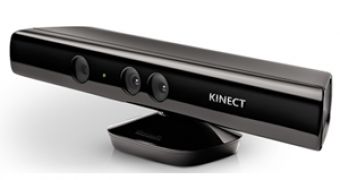The final version of Microsoft’s Kinect for Windows SDK 1.0 is now available for download, offering support for applications built using C++, C#, Visual Basic, and Visual Studio 2010.
Some of the main changes that the new tool iteration packs include better skeletal tracking, along with enhanced speech recognition and modified APIs.
The SDK also offers support for a number of up to four sensors being plugged into the same computer simultaneously, and brings along a Near Mode feature.
There are also improvements brought to Audio & Speech, as well as a sample browser, and a variety of other samples to help developers get started with the building of apps based on the SDK.
Most of the enhancements packed with the new release are based on the Beta 2 version of the SDK. Thus, Microsoft is underlining mainly the changes made in the development kit since that release.
Some of the improvements that the new flavor of the SDK sports would include:
- Support for up to four Kinect sensors plugged into the same computer - Significantly improved skeletal tracking, including the ability for developers to control which user is being tracked by the sensor - Near Mode for the new Kinect for Windows hardware, which enables the depth camera to see objects as close as 40 centimeters in front of the device - Many API updates and enhancements in the managed and unmanaged runtimes - The latest Microsoft Speech components (V11) are now included as part of the SDK and runtime installer - Improved “far-talk” acoustic model that increases speech recognition accuracy - New and updated samples, such as Kinect Explorer, which enables developers to explore the full capabilities of the sensor and SDK, including audio beam and sound source angles, color modes, depth modes, skeletal tracking, and motor controls - A commercial-ready installer which can be included in an application’s set-up program, making it easy to install the Kinect for Windows runtime and driver components for end-user deployments. - Robustness improvements including driver stability, runtime fixes, and audio fixes
Before installing the new release, devs should make sure that there is no sensor connected to the computer and that they have removed the previous installations of the SDK.
Microsoft also recommends all drivers for Kinect sensors to be uninstalled, and Microsoft Server Speech Platform Runtime and SDK components to be removed. Also, Visual Studio must be closed when installing the SDK.
Kinect for Windows SDK comes with support for 32-bit (x86) and 64-bit (x64) processors (dual-core 2.66-GHz or faster, with 2 GB of RAM required) and can work on Windows 7 and Windows Embedded Standard 7.
You can have a closer look at the full release notes for the Kinect for Windows SDK 1.0 on Microsoft’s website. The final version of Kinect for Windows SDK 1.0 can be downloaded from Softpedia as well, via this link.

 14 DAY TRIAL //
14 DAY TRIAL //